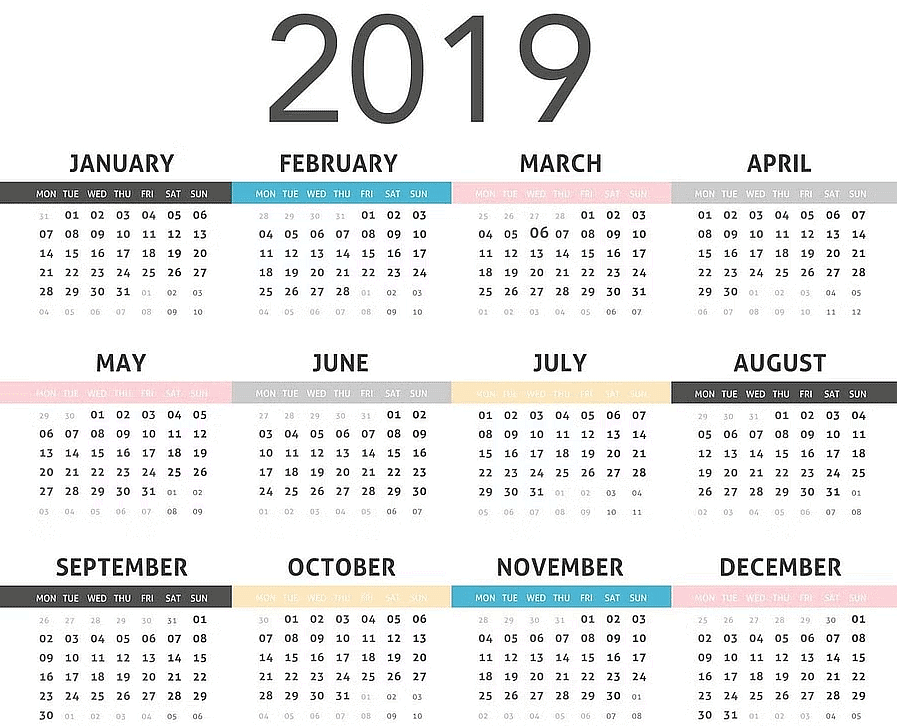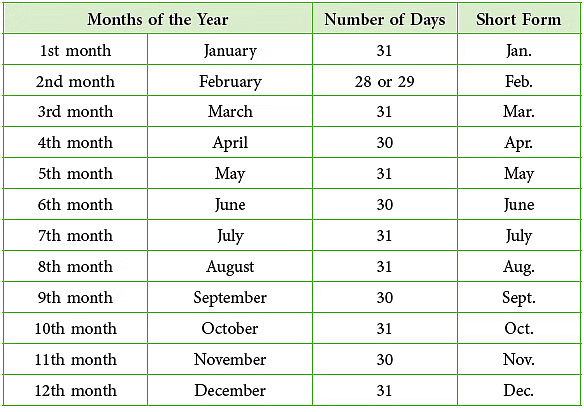Time and Calendar | Mathematics for Class 2 (Joyful-Mathematics) PDF Download
The Clock
Look at the clock shown alongside.
The face or dial of the clock is divided into 12 equal parts. Each of the 12 parts has 5 equal divisions.

Thus, the dial of the clock is divided into 60 small divisions. The minute hand moves from one numeral to the next numeral in 5 minutes.
So, the minute hand takes 5 × 12 = 60 minutes to complete 1 round of the dial.
The time taken by the minute hand to complete one round is called 1 hour.
So, 1 hour = 60 minutes
The hour hand moves from one numeral to the next numeral in 1 hour.
Telling the time to the Half Hour
When the minute hand has passed half way round the clock and is at 6, it is half past the hour.
1 hour = 60 minutes, so half an hour = 30 minutes.
In this clock, the minute hand is at 6.
The hour hand is between 5 and 6, that is, after 5 but before 6.
We read this time as: “Half past five” and write it as 5:30.

Explore Minutes and Hours
There are 60 minutes in 1 hour

Calendar
A calendar is a record of days and months in a year. The calendar for the year 2019 is given below.

Months of the Year
There are 12 months in a year. They are: January, February, March, April, May,
June, July, August, September, October, November and December.
The number of days in the months are as under.

Remembering the number of days in a month of the year.
Close your hand into a fist.
Count the months on the knuckles. You will see that all the months with 31 days are counted on the knuckles. The rest come in between the knuckles.
Always start with January on the knuckle of the forefinger, then February on the space between this knuckle and the next knuckle and so on.
Number of Days in a Year
A day is the time that the earth takes to make one complete rotation on its axis. 1 day is the standard unit of time.

1 year is equivalent to about 365 or 366 days.
To find the number of days in a year.
We know that,
- 7 months— January, March, May, July, August, October and December have 31 days each.
- 4 months— April, June, September and November have 30 days each.
- February has 28 or 29 days.
∴ 1 year has (7 × 31) + (4 × 30) + (1 × 28) = 217 + 120 + 28 = 365 days.
There are 365 days in a year. One year in four years has an extra day. A year with 366 days is called a leap year. Every fourth year is a leap year. The extra day is added to February which then has 29 days. Here are some leap years:

What leap year will come after 2016?
How did you find it?
A week has 7 days.
Starting from the first day of the week, the names of different days of the week are:

To find the number of weeks in a year, divide 365 by 7.
365 ÷ 7 = 52 weeks and 1 day.


We call the years from 1900 to 1999 the twentieth century and the years from 2000 to 2099 the twenty-first century.
The years 1001 to 2000 equal 1000 years.
We have now entered a new millennium.
Writing Date Using a Calendar
Given on the right side is a copy of calendar for the month of November.
The date on the second Wednesday for the month of November in this calendar is November 13.
|
28 videos|262 docs|22 tests
|
















